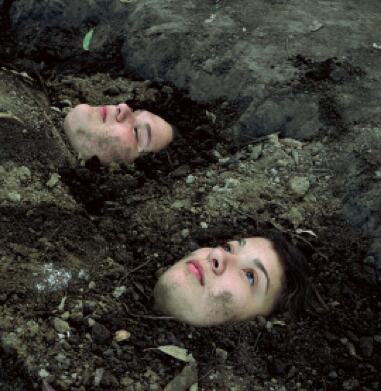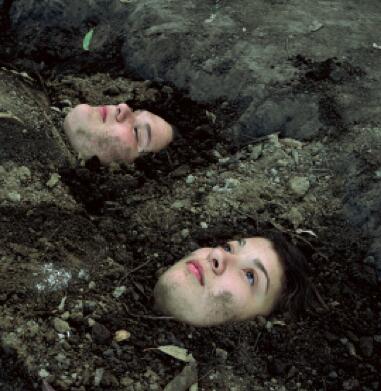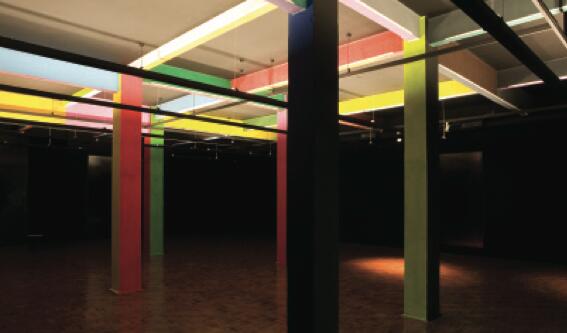29th São Paulo Biennial
In the words of Brazilian artist Nuno Ramos, the 29th São Paulo Biennial apparently marks the “end of the curatorial narcissism” that characterized recent editions, in particular the past edition, universally known as “The Void.” One might argue that the decision adopted by the curators of the 2008 edition (Ivo Mesquita and Ana Paula Cohen), to leave one of the stories in the pavilion designed by Oscar Niemeyer completely empty constituted, more than a demonstration of narcissism, a rather necessary and even corageous response to the moment of deep crisis that the institution was going through, but it is unquestionable that this year’s show, with its 150 participants, focuses attention once again on artistic matters rather than on institutional ones.

The theme selected by those responsible for the present edition, Moacir dos Anjos and Agnaldo Farias (assisted by a team of guest curators comprised of Chus Martinez, Rina Carvajal, Yuko Hasegawa, Fernando Alvim and Sarat Maharaj), a theme that the verse borrowed from the Brazilian poet Jorge de Lima − There is always a cup of sea for a man to sail in − singularly epitomizes, is the relationship between art and politics, in the most encompassing sense of both terms. The concept of the “political”, mainly, is approached from a considerably broad perspective, to the point that it almost becomes an ontological characteristic of artistic practice, since in the curators’ view, the utopian dimension of art is contained within itself, not without it or beyond it.: according to this interpretation, any artwork or artistic deed constitutes a public act, and as such becomes immediately political. At the same time that it becomes open to infinite declensions, this vision dilutes the predominance of the theme, rendering the inclusion of works in which the political commitment is less direct possible, and even justifying it. Such is the case of Francis Alÿs’s extraordinary video-installation based on the tornadoes that originate in the Mexican desert, which might be read, according to the artist’s own interpretation, as a commentary on the recent political changes in the country, and which going beyond this immediate reference, may become a metaphor for a great number of other − not necessarily political − situations. The work of Nuno Ramos is also situated on the borderline between narrative and enigma, between what is explained and is therefore understandable, and what is barely an allusion. His huge installation, entitled Bandeira branca (White Flag), occupies the entire central aisle, one of the most iconic spaces in the Biennial but also, oddly enough, one of the most difficult to occupy on account of the breathtaking beauty of its architecture. Comprised of three monumental sculptures executed in pressed black sand, from which there emerged a lugubrious sound of sambas sung by male voices, and three live black vultures, Bandeira branca constitutes a sort of negative of Niemeyer’s architecture, offering quite a direct counterpoint to the unbridled tendency to boasting that marked the years of the construction of the Biennial’s premises, of Brasilia and of other modernist monuments, and which seems to prevail at present in Brazil. The collective hysteria generated by the presence of the black vultures, fuelled by the press, and which culminated with the withdrawal of the animals, confirms the pertinence of a not very optimistic vision of the present time.
Consistent with the great emphasis on the educational process, and from a more general perspective, with the aspiration of the Sao Paulo Biennial Foundation to play a formative role, the 29th Biennial included quite a significant number of historical works that were fundamental for a true understanding of the more contemporary proposals.
In this respect, the fact that the works produced during the 1960s and 1970s should be the ones that refer more directly to the Biennial’s theme is quite significant. In some cases, this came via the oblique way of a militant commitment, such as the one that inspired the actions of famous Latin American collectives like the CADA (Colectivo Acciones De Arte), an interdisciplinary group active in Chile between 1979 and 1983, whose initiatives are presented here through recordings; in other cases, through happenings and installations that sought to encourage the participation of the public, including children, as was the case with Swedish artist Palle Nielsen’s large installation, Modellen, which in 1968 transformed Stockholm’s Moderna Museet into a huge playground. Despite the apparent distance between these two trends, both are extremely relevant to the understanding of present-day production, which in turn includes proposals directly committed with the social sphere, but also related practices, which justifies the curators’ consideration that “contemporary” is what is significant today, and not necessarily what is being produced at the moment. That vision explains, for example, the juxtaposition, in a single exhibition hall, of historical records of State crimes committed in Brazil and in Germany (the assassination of journalist Vladimir Herzog, in Brazil, in 1975, and of members of the Baader-Meinhof group, in Germany, in 1977), and works inspired in a more or less direct way on those events, by artists such as Hélio Oiticica, Arthur Barrio, Cildo Meireles and Sandra Gamarra. Since 2002, the Peruvian artist has reproduced, on the basis of images included in museum and exhibition catalogues, works that are incorporated in this way in the fictitious LIMAC museum (Museum of Contemporary Art, Lima), an institution that should make up for the absence of a contemporary art museum in the capital of Peru. For that exhibition space, which undoubtedly constitutes one of the highlights of the show, Gamarra reproduced, at the request of the curatorial team, the paintings that comprise Gerhard Richter ́s famous series, October 18, 1977, which portray the lifeless bodies of the members of the German terrorist group. The appropriation of Richter’s paintings may be interpreted as a rebellion, both on the part of the artist and of the curators, against New York MoMA’s reluctance to loan the works, and it constitutes, in this sense, the best example of politically committed works. On the other hand, the more explicit attempt to create, in the context of the biennial, spaces for coexistence comparable, at least in their essential nature, to the model proposed by Palle Nielsen, is left to the so-called terreiros, six “squares” scattered along the exhibition space, each of them conceived by an artist and/or an architect. For some of the terreiros specific programs that included film, video, debate and performance cycles were formulated, while others were conceived to remain empty and silent, like the one designed by Ernesto Neto, entitled Lembrança e esquecimento (Memory and oblivion), a space conceived as a pause or a hiatus in the tour of the exhibition, in which visitors are invited not merely to reflect on what they have just seen, but also to forget, making room for what is yet to come. This stance, which may be considered generous or simply realistic, in the sense that it admits the evidence that it is virtually impossible to understand, remember, and even see all the works on display, is perfectly consistent with the museographic layout of the exhibition, conceived by architect Marta Bogea, a sort of expressionist labyrinth that dissolves the rigidity of the structure of columns that support the three stories, creating a myriad of vanishing points, narrow streets, corridors, squares and spectacular vistas of the park that surrounds the building.











